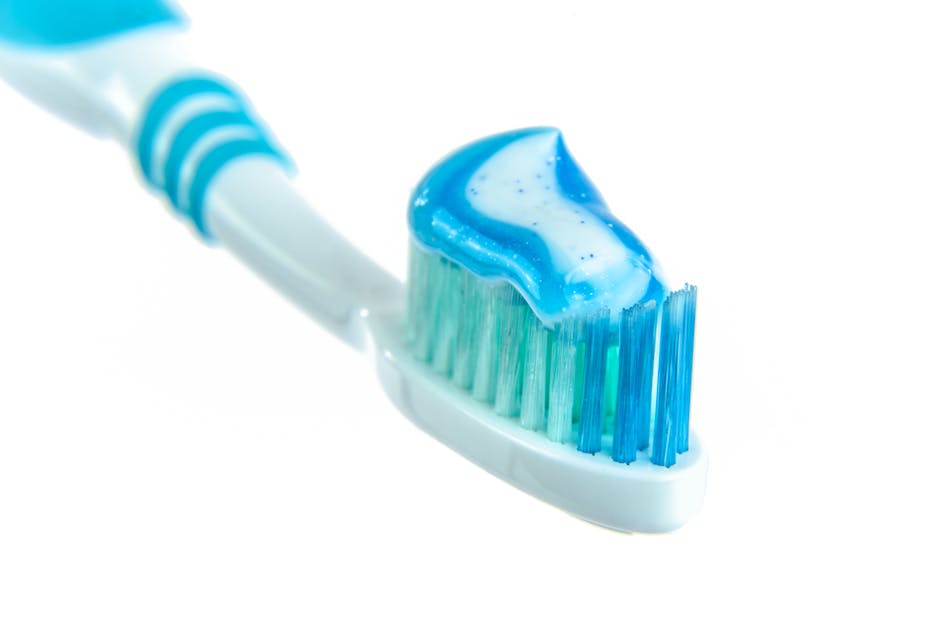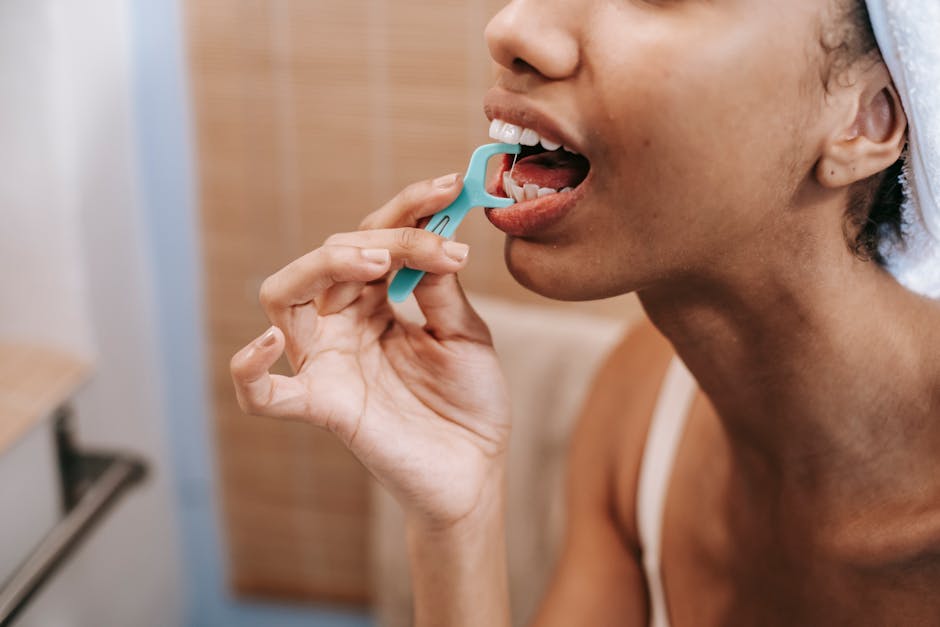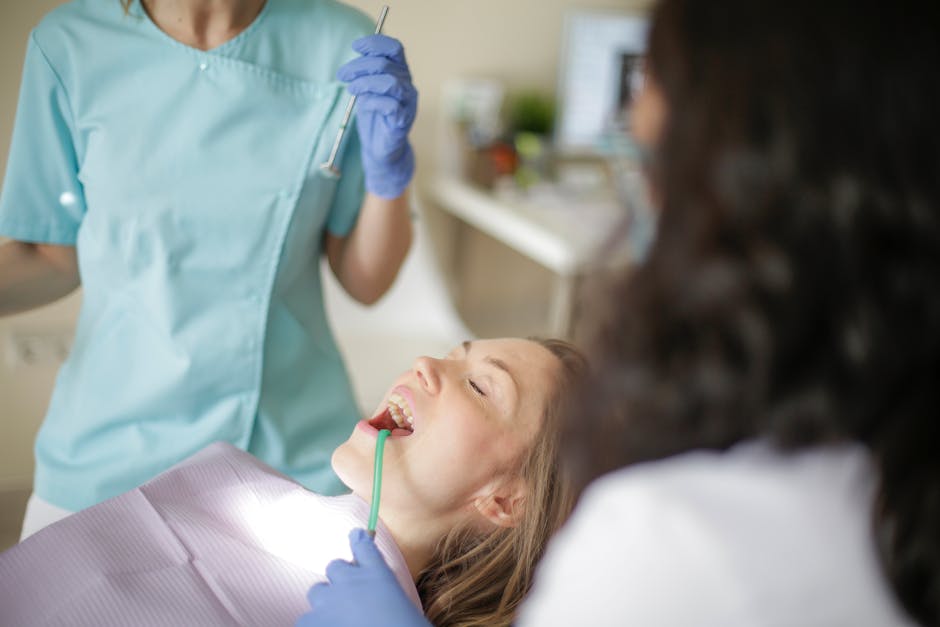Adopting good dental hygiene practices is not only beneficial to your oral health but also the overall health of your body. Keep reading to learn more about some of the most important areas of dental hygiene.
1. Brushing Right
Brushing your teeth is a daily routine, but are you doing it the right way? Here’s a quick guide to ensure your oral hygiene is on point.
Choose the right tools. A soft-bristled toothbrush is your best bet, alongside fluoride toothpaste to fight off plaque. Using a toothbrush with hard bristles can harm your gums and enamel.
Wet your brush and apply a pea-sized dollop of toothpaste. Aim the brush at a 45° angle towards the gum line. This helps in reaching the plaque hiding under the gum.
Use gentle circular motions. Cover all surfaces – the outside, inside, and the biting surfaces of your teeth. Don’t forget about your molars tucked away at the back.
Spend two minutes brushing. Most people fall short here, so consider using a timer or humming a song that lasts for two minutes.
After you’ve brushed every tooth, gently brush your tongue or use a tongue scraper. This helps in removing bacteria and keeping your breath fresh.
Rinse your brush well after use and let it air dry. A damp, covered toothbrush is a breeding ground for bacteria. Replace it every three to four months, or sooner if the bristles start to fray.
A consistent, proper brushing routine is your front-line defense in maintaining good oral hygiene and protecting your overall health. So, take that extra minute in the morning and at night. Your smile will thank you.

2. The Fluoride Debate
Is fluoride a friend or foe? Let’s lay down the facts and sift through the science behind fluoride toothpaste.
Fluoride is like your teeth’s personal trainer. It rebuilds weakened tooth enamel, slows down the loss of minerals from the enamel, reverses early signs of tooth decay, and prevents the growth of harmful oral bacteria.
Some folks argue about the adverse effects of fluoride, raising alarms without the backing of substantial, credible research. The truth is, like anything, the key is in the dosage. Used in appropriate amounts, as present in toothpaste and tap water, fluoride is not just safe but beneficial for dental health.1-3
The American Dental Association (ADA), World Health Organization (WHO), and Centers for Disease Control and Prevention (CDC) all champion fluoride for its role in preventing cavities and improving oral health worldwide.
Overindulgence can lead to fluorosis (mostly cosmetic changes in the appearance of tooth enamel) and very rarely to more serious health issues.4
However, this is typically only a risk when high doses are consumed for a long period. Using a pea-sized amount of fluoride toothpaste for brushing twice a day provides the perfect balance of reaping all the benefits of fluoride while avoiding any risks.
Fluoride is a powerful ally for your teeth. Its ability to battle cavities and reinforce tooth enamel has been proven time and again, making it an indispensable part of your oral hygiene routine. The key is finding the right balance between too little and just enough. Embrace fluoride, and let it fortify your dental defense – effectively and efficiently.
3. Flossing: A Necessary Nuisance
To floss or not to floss? We can all agree that flossing isn’t the star of the hygiene show; it’s more like the unsung hero, quietly fighting battles beyond the bristles’ reach. So, it’s time to unwrap the truth about this slender savior of smiles and discover why your gums will thank you if you stick with it.
Every particle of food you eat and every sugary drink you sip leaves a little something behind. It’s a perfect environment for bacteria, creating a cozy haven for cavities and gum disease. Brushing is your first line of defense but floss is the special forces team that goes where brushes dare not tread. In the grand landscape of your mouth, those interdental nooks and crannies are prime real estate for plaque and tartar.
Floss removes the lurking plaque, banishes bits of food, and disrupts colonies of bacteria planning to wreak havoc on your gums. It may seem like a monumental task, but it’s more like taking a brisk walk through the park — a park littered with hidden treasures ready to be discovered (or in this case, disposed of).
The verdict from dentists is unanimous: incorporating floss into your daily routine is integral for oral health.5 Flossing does its best work under the gum line and between teeth, hitting spots your toothbrush probably gave up trying to reach. While reports vary on whether flossing prevents cavities, evidence firmly supports its role in fighting against periodontal diseases.6
Mastering the floss may not feel as rewarding as landing the final jigsaw puzzle piece or crossing the finish line after a marathon. But think of it as a ritual of rescue for your gums and teeth. You’re not just moving a string side-to-side; you’re ensuring your smile stays charming and your oral health stays in full swing, without any party crashers like plaque and gum disease.
Imagine, years down the line, gleefully recounting how you and your trusty floss stood against the tide of dental woes. Your gums staying strong, resilient, and grateful. After all, isn’t a moment of flossing worth a lifetime of healthy smiles?
So, to answer the question: To floss. Definitely to floss. It’s like a secret promise to your gums each night, vowing to protect them against the silent risks lurking in your mouth. Remember, every time you floss, you’re preventing a little decay. Happy flossing!

4. Mouthwash Myths
Diving into the world of oral hygiene, many wonder about the role of mouthwash. Far from just a minty wave of freshness, this liquid ally does more than just mask bad breath. Let’s explore the facts about mouthwash.
There are two main types of mouthwash: cosmetic and therapeutic. Cosmetic mouthwashes focus on freshening your breath. Therapeutic mouthwashes, on the other hand, contain active ingredients that help reduce plaque, gingivitis, and cavities, and even whiten teeth over time.
Mouthwash often contains ingredients like chlorhexidine, fluoride, peroxide, and essential oils. Each has a specific role:
- Chlorhexidine and cetylpyridinium chloride fight plaque and gingivitis
- Fluoride prevents cavities
- Peroxide whitens teeth
When should you use mouthwash? The consensus leans towards using it after brushing to avoid rinsing away the fluoride from your toothpaste or after a meal to remove any lingering food particles and bacteria. A pro tip: wait about 30 minutes before using mouthwash after brushing; let that toothpaste work its full magic first.
Is mouthwash necessary or just an extra step? Think of mouthwash as the closer in your oral hygiene routine. Brushing and flossing play a strong game but introducing mouthwash brings in that final defense against plaque and bad breath, making it a triple threat in maintaining dental health.
Swishing with mouthwash is the final step for your teeth and gums – a refreshing finale that leaves your mouth feeling fresh and adds an extra layer of protection against dental issues. It’s the cherry on top of your oral hygiene routine, ensuring you step out with minty-fresh confidence.
Mouthwash is a valuable addition to your dental routine and fresh breath confidence. The right rinse could be the MVP your oral hygiene never knew it needed. Keep on swishing!
5. Diet’s Dental Impact
The eternal battle of crunch versus sweet, where your teeth stand on the frontline, vulnerable and valiant. It’s not just a tale of taste but a saga of dental health, with heroes and villains duking it out in the arena of your mouth. Not all snacks are created equal when it comes to your smile’s well-being. Let’s bite into the details.
Crunchy vegetables are the unsung heroes of oral health. These fibrous powerhouses are like nature’s toothbrushes, sweeping away plaque and stimulating saliva production with every chew. Think carrots, celery, and apples — their crunchy texture requires a workout for your jaws, which is a good thing.
This action scrubs your teeth gently, disrupting the plaque. Plus, more saliva means your mouth’s natural defense system is up and running, rinsing away food particles and buffering acids to protect your enamel.
Sugar, while a delight to your taste buds, is the smile’s nemesis. When sugar enters the scene, harmful bacteria in your mouth feast on it, producing acids.
These acids chip away at your tooth enamel, inviting decay and cavities to settle in.7 Sticky sweets and sugary drinks linger longer, ensuring the acid-producing party lasts well into the night.
But here’s the twist — not all villains wear capes; some disguise themselves as your daily dose of carbs. Bread, pasta, and even innocent-looking crackers transform into sugars right in your mouth, turning into fuel for bacteria.
However, water is the ultimate hydrator and mouth cleanser. A swig or two not only washes away remnants of food but also helps dilute the acids.
So, what’s the moral of this mouth tale? Balance and choice. Incorporating a diet that puts crunchy vegetables at the forefront, minimizing sugar, and staying hydrated can keep dental issues at bay. It’s not about banishing treats entirely.
Rather, it’s the art of moderation and mindfulness. Your diet plays a lead role in the story of your dental health, with each meal determining whether your smile stays resilient or calls out for help.
And don’t forget, amidst this saga of snacks and smiles, routine brushing, flossing, and dental checkups hold the director’s chair, orchestrating a masterpiece of oral health. Your teeth’s fate hangs in the balance of your choices — so choose wisely.

6. Changing Your Toothbrush
When it’s time to part ways with your toothbrush, you’ll know. The general rule is to replace it every three to four months. After countless brushing sessions, the bristles become frayed and less effective at removing plaque and food particles.
Pay attention to the appearance of your brush. If the bristles are flaring out, it’s a clear sign they’ve seen better days. Bristles should be upright and firm to effectively clean your teeth and gums.
If you’ve been ill recently, consider replacing your toothbrush sooner. Germs from a cold or flu can linger on the bristles, potentially leading to reinfection.1
The same guidelines apply to electric toothbrushes. Many come with indicators that signal when it’s time for a new brush head.
Accidents happen. If your brush takes a dive into unsanitary territory, it’s best to start fresh with a new one, no matter how briefly you’ve used it.
Replacing your toothbrush regularly is a simple step towards maintaining your dental health. Embrace the change and keep your smile shining bright.
7. Professional Cleanings
Understanding what happens during professional dental cleanings can help alleviate any anxiety you may feel about visits. The main focus of these appointments is the cleaning itself, a crucial step in preventing plaque and tartar buildup, which can lead to cavities and gum disease.
The process begins with scaling, where your dental hygienist uses a scaler to remove plaque and tartar from around the gum line and between teeth. This thorough cleaning reaches areas difficult to access with regular brushing and flossing.
Next, your teeth are polished with gritty toothpaste and a rubber cup. This step leaves your teeth feeling smooth and helps prevent future plaque accumulation.
Your hygienist will also floss your teeth, potentially uncovering spots you may have missed in your daily routine. If your gums bleed during this process, it’s a sign that they need more attention at home.
Additional treatments may include:
- Fluoride applications to strengthen enamel
- X-rays to detect any underlying issues2
Regular dental cleanings prevent small problems from becoming major concerns, saving you time, discomfort, and money in the long run.
Remember, your dentist is your partner in maintaining a healthy smile. These visits are essential for protecting your oral health and catching any potential issues early on. Embrace the process and walk out of the office with confidence in your smile.
8. Dental Insurance Wisdom
Dental insurance can be a valuable tool in maintaining your oral health, but understanding what your plan covers is key to making the most of your benefits.
Preventive care, such as check-ups, cleanings, and X-rays, is often fully covered by dental insurance plans. This encourages regular maintenance and early detection of potential issues.
More involved procedures, like fillings, crowns, and other restorative work, may only be partially covered. Orthodontic treatments are typically covered at a lower percentage, if at all.
Most dental insurance plans have an annual maximum spend, usually a few thousand dollars. Once you reach this limit, you’ll be responsible for any additional costs. It’s important to note that these caps haven’t kept pace with inflation, which can leave some questioning the value of their insurance.
However, dental insurance provides peace of mind and can significantly reduce the financial impact of unforeseen dental issues. Root canals, extractions, and emergency visits are less daunting with insurance coverage.
Think of dental insurance as a form of protection. While it may not cover every expense, it can cushion the blow of unexpected dental needs. The key is to choose a plan that aligns with your specific requirements, ensuring that your investment contributes to your overall oral health.
By understanding your dental insurance benefits and selecting a plan that fits your needs, you can confidently maintain a healthy smile without breaking the bank.
9. The Power of Water
Water is a simple yet powerful tool in maintaining oral health. While it may not have the minty flavor or fluoride content of other dental products, water plays a crucial role in keeping your teeth and gums healthy.
Each sip of water helps rinse away food particles and dilute the acidic byproducts of oral bacteria, reducing the risk of cavities and enamel erosion. Staying hydrated also promotes saliva flow, which is your mouth’s natural defense against harmful bacteria.3
If you’re dealing with bad breath, drinking water can help. A dry mouth creates an environment where odor-causing bacteria thrive, so staying hydrated is key to keeping your breath fresh.
Water also helps neutralize the pH levels in your mouth after consuming sugary or acidic foods and drinks. This protects your enamel from erosion and decay.
While tap water in many areas contains added fluoride, which helps prevent cavities, even fluoride-free and bottled water offers benefits. The act of swishing with water interrupts the buildup of sticky, acidic substances on your teeth.
If you find yourself snacking late at night, choose water as your beverage to minimize the sugary residue left behind for bacteria to feast on while you sleep.
Water may be a humble solution, but it’s a readily available and effective ally in your oral hygiene routine. By making water your drink of choice throughout the day, you’re taking a simple yet powerful step toward a healthier smile.
So, raise a glass of water and toast to the unsung hero of dental health. Every sip is a step towards a brighter, healthier smile.
10. Quitting Smoking
Quitting smoking may seem challenging, but when it comes to your oral health, the benefits make it worth it. Let’s focus on why quitting tobacco is a chance for your mouth to recover from damage and improve its health.
Quitting smoking helps prevent gum disease. Smoking increases plaque production and reduces saliva flow, creating an environment for gum disease to thrive. Saying goodbye to cigarettes allows your gums to heal rather than succumb to bacteria.
Your chances of tooth loss decrease significantly when you quit smoking. Each cigarette avoided helps keep your teeth secure and healthy in your mouth.
Quitting smoking also drastically improves your breath, eliminating the unpleasant odor associated with tobacco use. Within weeks of quitting, you’ll start noticing a brighter smile as stains from smoking begin to fade.
The mouth’s ability to heal and regenerate is remarkable. Just 20 minutes after your last smoke, your body begins its journey towards healing. Gums become healthier, breath becomes fresher, and over time, your risk for oral health issues diminishes. You’re essentially reversing the impact of tobacco on your mouth.
Finally, quitting smoking dramatically reduces your risk for oral cancer. By choosing a smoke-free lifestyle, you’re not just rejuvenating your smile; you’re defending against a serious health threat.
As you consider quitting cigarettes, envision a future with a healthier, brighter smile and the invaluable benefit of improved overall health. Quitting smoking is a choice that saves both your money and your smile. It’s about embracing a path toward a future where every smile reflects the choice of health over habit.

Adopting Healthy Dental Hygiene Practices
In essence, the heart of maintaining a radiant smile and robust oral health isn’t found in complex rituals or expensive products; it lies in embracing the simplicity and consistency of good dental hygiene practices.
By adopting straightforward habits like regular brushing and flossing, we not only safeguard our smiles but also fortify our confidence as we navigate through life’s moments—big and small.








